Vermont city seeks new residents to reverse a population decline
| Published: 12-31-2021 7:49 PM |
RUTLAND — Since 2018, Kaifa Dennis had been wanting to move out of the metropolitan Washington, D.C., area where he grew up and went to college. He was seeking a slower-paced, small-town life.
Rutland made it to the top of Dennis’ short list this year when it honored his great-great-great-grandfather, Martin Henry Freeman, with a bust on the Rutland Sculpture Trail.
Freeman was born in Rutland in 1826. He attended Middlebury College and in 1856 became the first Black president of a U.S. college, Allegheny Institute in Pittsburgh (later named Avery College).
Dennis, 43, wanted to become better acquainted with Freeman’s home city. He began corresponding with some Rutland residents, whom he found warm and welcoming.
The setting up of Freeman’s sculpture also signaled to Dennis that the city — which had seen complaints of racial incidents — was serious about improving diversity and inclusion.
“That was really attractive to me,” he said.
Dennis is among dozens of out-of-state residents who have moved in recent years to the Rutland area. He relocated to the city this summer with his miniature pinscher, Romeo, to lead his family’s efforts in establishing a college scholarship in Freeman’s name. He is renting an apartment while looking for a new job.
The newcomers are bucking the trend in an area that’s confronting a population decline. Between 2010 and 2020, according to the 2020 census, 688 residents left Rutland, diminishing its population to 15,807 — a 4.2% decrease over a decade.
Article continues after...
Yesterday's Most Read Articles
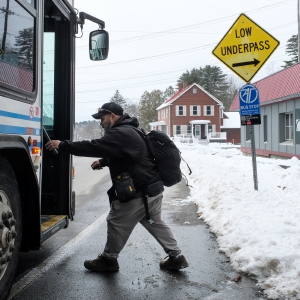 Upper Valley winter shelters kept dozens warm and dry
Upper Valley winter shelters kept dozens warm and dry
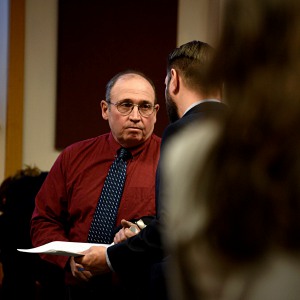 Former principal of South Royalton School released from prison
Former principal of South Royalton School released from prison
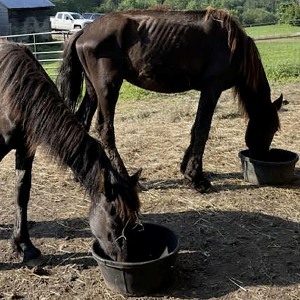 Owner of Friesian horse facility ordered to pay care costs for seized animals
Owner of Friesian horse facility ordered to pay care costs for seized animals
And they are coming for reasons ranging from climate to economics.
Los Angeles residents Enci Box, her husband, Stephen, and their three children also relocated here this summer. After 25 years of living in the second-most populous city in the U.S., the couple wanted to get away from traffic jams, poor air quality and California’s growing wildfires.
They looked for a place close to nature, where their young ones could walk or bike to get around, rather than always being ferried in a car.
“It had a lot to do with the kids,” Enci Box said of their two boys, ages 10 and 7, and 2-year-old girl.
The couple bought a house in downtown Rutland, where she homeschools their boys, Sydney and London, as little sister Berlin looks on. Her husband runs a real estate business, renting out local residential units.
This fall, newlyweds Jackie and Austin Osborne similarly headed to the Rutland area.
In the four years they had been living in Fort Collins, a Colorado city at the foot of the Rocky Mountains, they saw the state become increasingly crowded. That meant not only more traffic but also higher housing prices and intense competition for good jobs.
Wildfires were also occurring more frequently, tainting the air.
“That was the last straw for me,” Jackie Osborne, 29, said.
Since the couple enjoyed hiking and camping, they wanted to remain close to nature — but in a smaller town where housing was not as expensive.
The Osbornes decided to move to South Wallingford, about 15 miles south of the county seat. Jackie Osborne works at a residential treatment center, and her husband works at a solid waste facility.
They’re leasing an apartment, where they live with two rescue dogs, Rosie and Berlin. That was where Austin Osborne marked his 30th birthday in November.
These households’ decisions to resettle in the Rutland City area is welcome news to the Vermont municipality that lost the most residents in the past decade.
The county as a whole is experiencing the same trend. Though the population rose in some Rutland County municipalities between 2010 and 2020, particularly ski resort towns, the county posted a net loss of 1,070 residents. The population fell 1.7% to 60,572 last year — making it the Vermont county to lose the most residents in the latest population count.
The state, meanwhile, grew 2.8% to some 643,000 residents. But that growth rate lagged behind the U.S. average of 7.4% and the northeastern region’s 4.1% for the decade.
Rutland maintained its position as the state’s fifth-largest municipality, as it was in the 2010 census, but its population has been on a downward trajectory since 2000. Throughout the 1900s, it was Vermont’s second-largest municipality, behind only Burlington.
The area’s population decline came as industries shuttered, such as marble and slate quarries as well as manufacturing plants, while the opioid epidemic gained a foothold.
In a double whammy, the birth rate has declined at the same time that some younger workers moved away.
“A lot of times they don’t stick around after graduation because a lot of those high-paying jobs that used to be here … those are in other places now,” said Ed Bove, executive director of the Rutland Regional Planning Commission.
He said younger workers have headed to metropolitan areas or the Sun Belt, referring to states in the South and West, from Florida and Georgia through the Gulf states into California.
With advances in medicine and travel, Bove said, more elderly Vermonters are also spending much of their time in warmer regions, turning them into out-of-state residents. Those who are 65 or older make up nearly 20% of Vermont’s population, making it one of the oldest states in the nation.
And population loss breeds more of the same as businesses and amenities disappear from affected municipalities.
“As populations decline, they lose things,” said Peter Nelson, professor of geography at Middlebury College, “and that can further lead to a downward spiral.”
In an effort to revitalize Vermont’s aging workforce, the state in 2018 offered $10,000 for remote workers of out-of-state businesses to move to Vermont. The money was meant to reimburse them for costs such as moving expenses and work-space supplies.
The coronavirus pandemic, which hit the U.S. in early 2020, has brought new trends in domestic migration. In a desire for more open spaces amid the virus spread, city dwellers have been relocating to small towns, including those in Vermont.
But the Rutland area has attracted new residents for reasons beyond staying safe during the pandemic.
The Chamber and Economic Development of the Rutland Region created a concierge service in 2016 to help reverse Rutland County’s population decline. Through local volunteers, the Rutland Red Carpet concierge service assists prospective residents in the moving process, such as finding a home, a job and a social group, even before they arrive. Its goal is to convert people in transition into Rutland County residents.
Since its creation, according to the chamber, the concierge service has helped around 110 people relocate to the county, including parents and their children.
The biggest reason the adults cited for coming to the area was “quality of life,” said chamber Executive Director Lyle Jepson. He said this means a slower pace of life than in big cities, lower cost of living and living close to nature.
People who moved to the Rutland area with the concierge service’s assistance come from all over the country. Most resettled in Rutland City, including Dennis and the Box family. Some chose to go to Brandon, Danby, Killington, Poultney and Wallingford.
About half work remotely, while others are employed in health care, manufacturing, nonprofit organizations or small businesses, said Kim Rupe, the chamber’s director for communications and community engagement. Most of the people who relocated since the pandemic started were young professionals.
On top of the parents who moved with their children, several families have welcomed young ones after settling in the area, Rupe said.
Rutland met all the requirements that the Box family sought in a new city, including a progressive political culture. One downside they saw was the lack of racial and cultural diversity.
These were important to the family, since Enci Box was born in Hungary and grew up in Germany. Her husband hails from Australia. She speaks Hungarian as well as German and French, which she is teaching her children.
But Rutland’s lack of diversity was not a deal-breaker for the couple, given the city’s proximity to cultural melting pots such as Albany, Boston and New York City. Rutland also isn’t far from the Canadian urban centers of Ottawa and Toronto, where Enci Box has relatives.
The key is for the family to travel whenever they can, said Enci Box, who worked as an actor before having children and who continues to do voiceover work for Hollywood films.
Having lived in Rutland for half a year, Enci Box said she is disappointed that the city center isn’t as conducive to walking or biking as she had hoped. She said sidewalks, which double as bike paths, are cracked in some places, so her family still relies on driving to get around.
Given Vermont’s rapidly aging population, Jackie and Austin Osborne are wondering how easy it would be for them to meet people their age. The couple hopes they’ll find a social circle as the months pass, especially once they get through their first winter in Vermont.
The state’s bigger proportion of elderly residents could also be viewed in a positive light, said Austin Osborne. As workers retire, he said, jobs would open up for younger people.
Like the Osbornes, Dennis noted the difficulty of finding a place to live in Rutland. He said rental properties were hard to find online, unlike homes for sale. He finally was able to find an apartment after two months of searching, with the help of Rutland residents he met through the Freeman sculpture project.
This experience gave him the impression that the city wasn’t very open to outsiders who were coming to rent.
“It was frustrating,” Dennis said. “Not everyone is in a position to outright buy a home.”
But he describes an overall positive time so far in Rutland. He noted the local community’s willingness to embrace a person of color and a relative stranger.
Dennis knew before moving here that Vermont is among the least racially diverse states in the U.S. The latest census shows that, with 89.8% of the population describing themselves as white, it’s the second-whitest state in the nation.
Dennis has heard of some racial incidents in the area but said that did not deter him from taking the leap into Rutland.
“I had some concerns,” he said, “but I figured I should come and see for myself and make my own decision.”

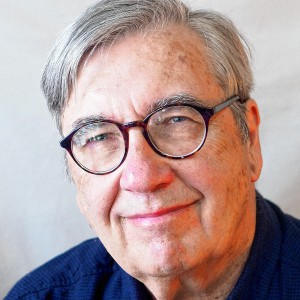 Over Easy: ‘A breakfast without a newspaper is a horse without a saddle’
Over Easy: ‘A breakfast without a newspaper is a horse without a saddle’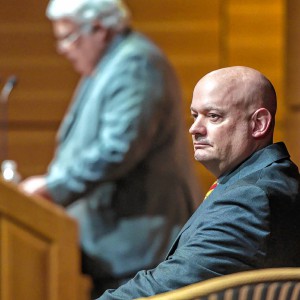 Lawsuit accuses Norwich University, former president of creating hostile environment, sex-based discrimination
Lawsuit accuses Norwich University, former president of creating hostile environment, sex-based discrimination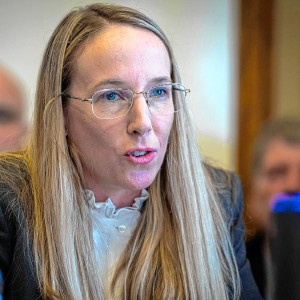 In divided decision, Senate committee votes to recommend Zoie Saunders as education secretary
In divided decision, Senate committee votes to recommend Zoie Saunders as education secretary
